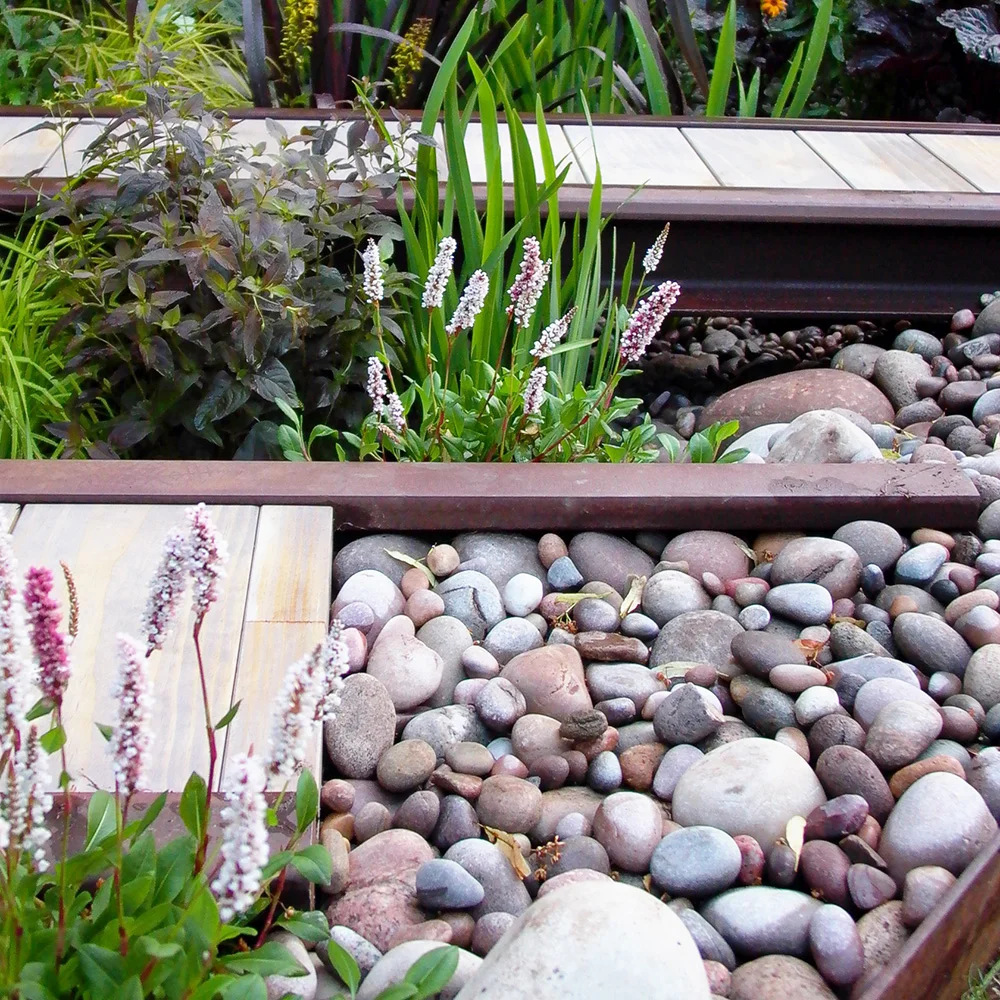
About Rain Gardens
A rain garden is a shallow depression in free-draining soil which allows rainwater to infiltrate gradually over 12-24 hours. Slowing the flow of rainwater in this way filters the water and helps to reduce flash flooding caused by impermeable surfaces and overloaded sewer systems.
Rain gardens can be fed directly from downpipes or act as an overflow point for water butts and/or stormwater planters.
For best results, rain gardens should contain a biodiverse mix of plants which tolerate short periods of both waterlogging and drought, and should be situated at least 3m away from buildings.
Rain gardens are just one element of Sustainable Drainage Systems (SuDS). Read more in-depth UK SuDS guidance and view case studies at www.susdrain.org.

UK Rain Garden Guide
For useful information, see the UK Rain Garden Guide by Bob Bray, Dusty Gedge, Gary Grant and Lani Leuthvilay. Lots of useful and practical advice on creating your own rain garden.

Rain Garden with Parking
A shallow, free-draining depression with plants that will tolerate the variable soil conditions. Persicaria affinis 'Superba', Ligularia dentata, Iris pseudocorus. See the Show Gardens section for more details on Wendy Allen’s RHS Gold medal-winning rain garden.
The Royal Horticultural Society uses Wendy Allen’s ‘The Rain Chain’ garden from the RHS Hampton Court Flower Show 2009 as an example on the RHS Rain Gardens information page. Rain gardens are a key part of the RHS’s Sustainability Strategy in the ‘How to Save Water in Your Gardens’ and Mains2Rains initiatives.
